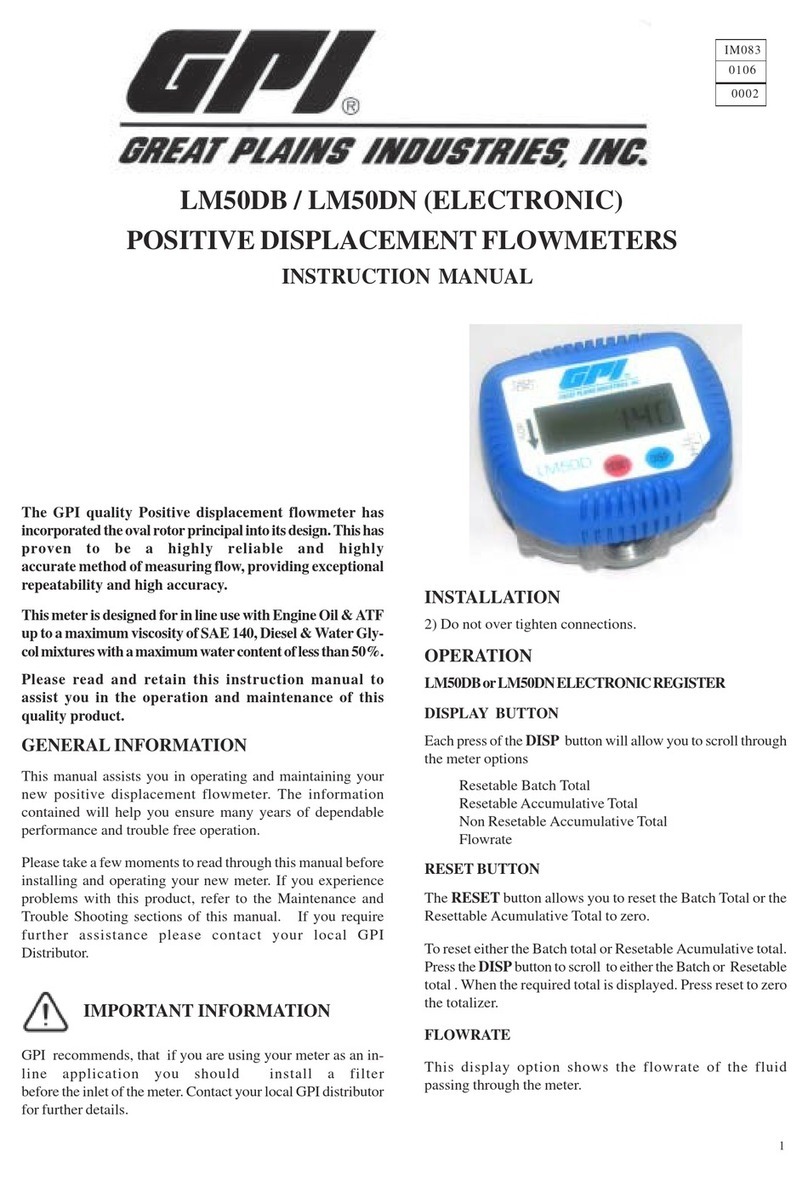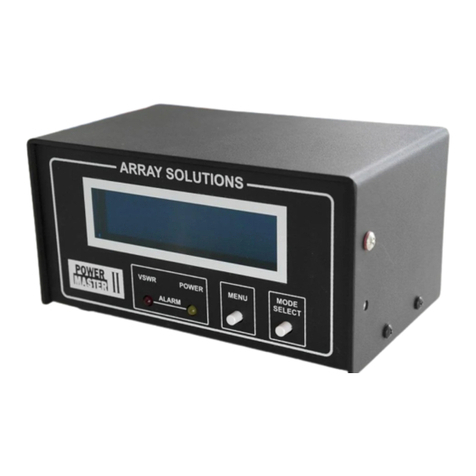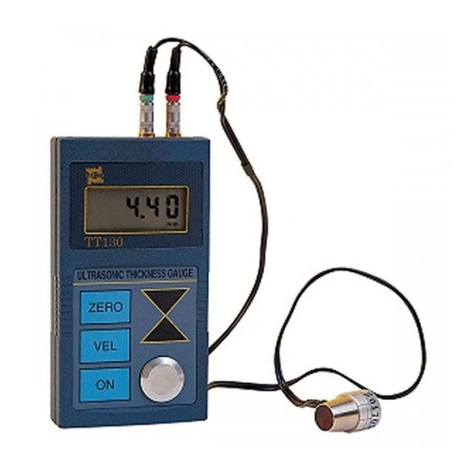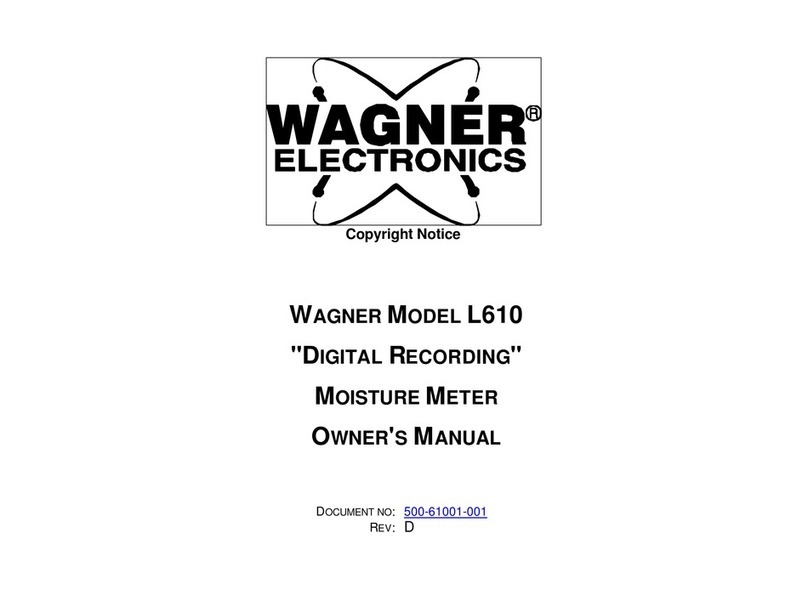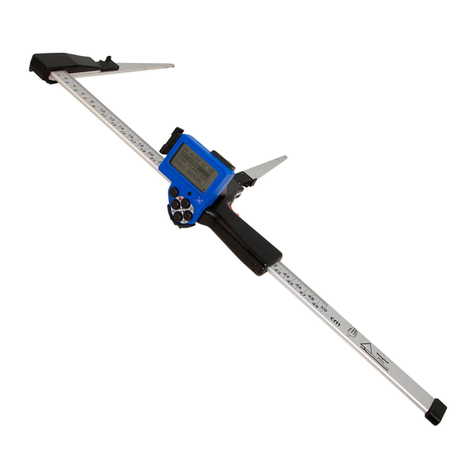fetatrack 360 User manual

fetatrack®360
fetal monitoring system
User Manua
l

fetatrack 360is issue 1 1
CONTENTS
INTRODUCTION 2
EQUIPMENT 3
SAFETY 4
SPECIFICATIONS 5
CONTROLS AND INDICATORS 7
OPERATING THE FETATRACK 360 9
PAPER LOADING 10
THE PRINTER 11
TRANSDUCER BELTS 12
FETAL HEART RATE MONITORING 13
DIRECT FETAL ECG 15
FETALSAT PULSE OXIMETRY 17
ALARMS 18
UTERINE ACTIVITY MONITORING 19
INTRAUTERINE PRESSURE MONITORING 20
FETAL ACTIVITY MONITORING 22
MATERNAL HEART RATE MONITORING 22
PREVENTATIVE MAINTENANCE 23
MONITOR CHECK-OUT PROCEDURE 24
SETTING UP THE FETATRACK 360 25
WARRANTY 26
GUIDELINES 28
NOTES 29

fetatrack 360is issue 1 2
INTRODUCTION
The FETATRACK 360 Cardiotocograph (available as an Antepartum or
Intrapartum monitor) is designed to provide cost effective care
throughout pregnancy. Internal or external transducers may be connected
to the FETATRACK 360. The functions described below are summarized
in the section on EQUIPMENT.
All units include twins ultrasound fetal heart rate measurement using dual
Doppler ultrasound transducers and external uterine pressure UA can be
monitored using the external (tocodynamometer).
The intrapartum monitor adds fetal ECG (FECG) and has an option of
including maternal ECG (MECG) measurement and an intrauterine
pressure transducer (IUP) for more accurate uterine pressure
measurement.
Both units can add an option for the monitoring of Maternal pulse
oximetry.
The FETATRACK 360is has the addition of the Nonin FetalSat fetal
pulse oximetry system.
All parameters are displayed on a large graphic displays which also
displays messages as appropriate. Ultrasound signal quality is shown by a
change in the flashing heart associated with the fetal rate display, so you
can be sure the recording is accurate and reliable.
The information is presented on a high resolution thermal printer running
at 1, 2 or 3 cm/min, and printed on standard format full width z-fold
paper. Event marks, date, time and mode are printed on the paper to
complete the record.
All FETATRACK 360s have bradycardia and tachycardia alarm
functionality, memory backup and an output socket for remote display of
screen information on a local computer, for example in the consultant's
office

fetatrack 360is issue 1 3
EQUIPMENT
The FETATRACK 360 is supplied with the following accessories for each version:
360is 360i 360a
Wide Angle Ultrasound
Transducer 2 2 2
FECG Leg Lead 1 1 n/a
Fetal Scalp Electrodes 2 2 n/a
External Uterine Pressure
Transducer 1 1 1
Internal Uterine Pressure
Transducer Option Option n/a
IUP Cable Option Option n/a
Maternal Pulse Oximetry Option Option Option
Maternal ECG Option Option n/a
FetalSat Pulse oximetry 1 N/a N/a
FetalSat Dual Sense ecg /
FSpO2 1 N/a N/a
Event Marker 1 1 1
Elastic Belt 3 3 3
Belt Buckles 3 3 3
Chart Paper 1 1 1
Ultrasound Coupling Gel
0.25ltr 1 1 1
AC line cord 1 1 1
User Instructions 1 1 1
REORDER INFORMATION
Part No. Item
0215-0003 Wide Angle Ultrasound Transducer (Blue)
M/1/0059 Wide Angle Ultrasound Transducer (Pink)
0211-0003 External Pressure Transducer
9800-0000 Internal Pressure Transducer
0261-0005 FECG Leg Lead LifeTrace Safelink
9021-0002 Transducer Belt Set
9260-0005 Chart Paper 20 BPM/cm
9260-0006 Chart Paper 30 BPM/cm
9000-0005 Coupling Gel 0.25L x 12 bottles
9088-0003 Fetal Scalp Electrode “Safelink”
FetalSat leg connector
FetalSat dual sense ecg / FspO2 sensor

SAFETY
The FETATRACK 360 is designed to comply with EN60601-1, Class 1
with protective earth via the AC line cord. Connection must be made to
ground and supply complying with local standards. For correct operation
check that the voltage setting and fuse ratings are correct for the local
supply.
The FETATRACK 360 is not explosion proof and must not be used in the
presence of flammable anaesthetics.
If in doubt about the correct operation of the FETATRACK 360, fetal
condition must be checked immediately by an alternative method.
We would recommend that, to maintain the standard of performance of
the FETATRACK 360, whenever possible the monitor is included in a
scheduled maintenance scheme.
The following symbols have been used on the front and rear panels of the
FETATRACK 360 and are here defined according to EN60101-1.
Alternating Current
Power On (Connection to the
mains)
Power Off (Disconnection
from the mains)
Type B Equipment
Type CF Equipment
Attention: consult
accompanying documents
fetatrack 360is issue 1 4

fetatrack 360is issue 1 5
SPECIFICATIONS
Size: 350 x 370 x 140 mm
Weight: 8 kg
Voltage: 100-240 Volts AC 50/60 Hz
Safety: Complies with EN60101-1
ULTRASOUND
Type: Continuous Doppler
Operating Frequency 2MHz±2% and 1.8MHz ±2%
Power Output 5 mW/sq cm max. SATA
Signal Processing Software AUTOCORRELATOR
DIRECT FECG (Intra models only)
Signal Range 40µV-5mV
Input Noise: <1,4µV p-p
CMRR: >125dB
ALARMS
Low Level: 60 - 120 BPM, Adjustable in steps of 5 BPM
High Level: 160 - 200 BPM, Adjustable in steps of 5 BPM
EXTERNAL UTERINE ACTIVITY
Type: Flat faced Tocodynamometer
Signal Range: 0 - 110 relative contractions strength
INTERNAL UTERINE ACTIVITY (Intra models only)
Intrauterine Pressure: Type optional
Signal Range 0 - 100 mmHg
EVENT MARKER
Hand held, person operated
PRINTER
Type: Thermal Array 8 dots/mm
Print Speed: 1,2 and 3 cm/min
Paper Size: 145 mm x 15 mtr
FHR Sensitivity: 20 or 30 BPM/cm
UA Sensitivity: 30/cm
IUP Sensitivity: 30mmHg/cm

fetatrack 360is issue 1 6
DISPLAY/PRINTER RANGES
FHR Range: 30 - 240 BPM
FHR Accuracy: +/- 1 BPM
UA Range: 0 - 110 units
FspO2 Range: 0 – 100%
OXIMETER
Oxygen Saturation 0% to 100%
(%FSpO2)
Pulse Rate Range 30 to 300 bpm
Accuracy
Blood Oxygen Saturation For specification, see footnote “a”
Pulse Rate 30 to 300 bpm; ±3 bpm
Displays
Graphical Displays 3-digit
Pulse Strength Graphic Bargraph
Measurement Wavelengths and Output Power
Red 661 nanometers @ 3 mw nominal
Infrared 905 nanometers @ 3 mw nominal
“a”. Calibration of the FetalSAT System was accomplished through carefully
controlled hypoxia studies in a laboratory animal model to establish the calibration
coefficients. For specifications, see FetalSAT Specification Supplement (available
upon request).

CONTROLS AND INDICATORS
FRONT PANEL
Set Uterine Pressure
to Zero
Audio Selector for
Ultrasound 1 & 2
Printer On/Off &
Speed Control
Ultrasound Volume
Decrease
Ultrasound Volume
Increase
Maternal & Fetal
Electrocardio-graph &
Ultrasound 2 Transducers
Input
Internal & External Uterine
Pressure Transducers Input
Ultrasound 1
Transducer Input
Socket
Power On
Indicator
Printer Door
Release Lever
fetatrack 360is issue 1 7

REAR PANEL
Mains On/Off
Power Inlet
Fuse
Compartment
Network or Local
Computer Port
Pulse Oximeter
Input
Event
Marker
fetatrack 360is issue 1 8

fetatrack 360is issue 1 9
OPERATING THE FETATRACK 360
The FETATRACK 360 comes to you with a multi-range power supply which can be
switched externally to suite the local AC line voltage. It will operate with an input
voltage between 100 and 240 volts AC, 50 or 60 Hz.
Connect the AC supply cord and switch the FETATRACK 360 on. The AC input
on/off switch is located on the rear of the unit adjacent to the AC line input socket.
Observe that the front panel power on indicator (1/0) is illuminated.
The FETATRACK 360 is now operational and the display will indicate the
operating mode.

fetatrack 360is issue 1 10

fetatrack 360is issue 1 11
THE PRINTER
The FETATRACK 360 prints on thermo-sensitive z-fold paper using a high
resolution thermal matrix printer. Heart rate, uterine activity and fetal movement are
recorded together with event marks, date, time, recorder speed and mode.
To load the paper pack in the printer, open the printer door by lifting the door
release lever and pulling the door open. The paper tray will slide forward
automatically, giving easy access for paper loading. Open two pages of paper from
the beginning of the paper pack and with the print uppermost and the Company
name and logo to the left place the pack in the bottom of the printer drawer. Make
sure that the paper is properly positioned; pull the free end of the pack over the
roller and close the door with the paper coming out over the top edge of the printer
door.
To operate the printer press the Printer On/Off switch on the front panel. The printer
will start to run and the chart speed will be shown in the display. To turn the printer
off press and hold the printer on/off switch until the printer stops. A few centimeters
of paper will be fed out at high speed.
The FETATRACK 360 printer will record at 1, 2 or 3 cm/min. To change the speed
during recording simply press the printer on/off switch momentarily. The
FETATRACK 360 is set to run at the speed of your choice and will always start at
this speed every time the printer is turned on. For details of how to change the
default speed see the section entitled "SETTING UP THE FETATRACK 360".
In the event that the paper pack is exhausted during recording the printer will
automatically turn off. The display will show "Paper Out" and the unit will emit an
audible bleep. Load a new paper pack as described above and close the recorder
door.
To recommence recording press the printer on/off switch momentarily. The printer
will print at high speed from its internal memory, that data gathered during the time
taken to change the pack. In this way a complete recording may be obtained without
any loss of information whilst the printer is reloaded. Once the memory printout is
complete the printer will continue to record at the selected speed.
The printer may be turned off while the paper pack is changed if the printer on/off
button is pressed and held before opening the printer door. In this case there is no
automatic printout of data at the recommencement of recording.

TRANSDUCER BELTS
Both the ultrasound and contractions transducers are held in position with elastic
belting which maintains the active elements in contact with the abdomen. The belts
should first be placed around the patient and held in place at the correct tension with
the plastic buckles. As the transducers are free to slide on the belt final positioning
can be easily achieved. Similarly repositioning of the transducers is made very
much simpler.
fetatrack 360is issue 1 12

fetatrack 360is issue 1 13
FETAL HEART RATE MONITORING
ULTRASOUND
The FETATRACK 360 ultrasound transducers are used to detect the fetal heart beat.
The transducer plugs are colour coded for ease of identification.
To monitor the first heart rate push the transducer (pink) plug firmly into the pink
front panel US1 socket and turn the FETATRACK 360 on. The second heart rate
channel may be used simultaneously to monitor twins externally by connecting the
second ultrasound transducer (blue) to the US2 (blue) socket.
Locate a clear fetal heart sound using a Doppler Fetal Heart Detector
(FETATRACK 120 or simular). Secure the stretch belt in position, so that it passes
over the transducer site and clamp in place with the buckle. Apply a liberal amount
of coupling gel to the transducer face and slide the transducer onto the belt, locating
it approximately in the position determined by the Doppler detector. Ensure that the
belt tension is sufficient to hold the transducer in good contact with the abdomen.
Since the transducer is free to slide on the belt final positioning can now be made to
obtain the clearest heart sound. The heart rate processor will start to calculate heart
rate within a few seconds and the heart rate can be observed on the digital display.
Correct operation can be verified by observing that the heart shaped fetal pulse lamp
is flashing at the heart rate.
The fetal pulse lamp is also used as a signal quality indicator. When positioning the
transducer observe the shape, which should be solid under best signal conditions. If
heart is hollow, this is an indication that the signal quality is not at its optimum.
Improved recordings can be obtained by repositioning the transducer so that the
heart flashes solid.
When the fetal pulse heart changes to hollow a black dot or line is marked on the
recording for the time that signal quality remains low. No mark is made in the
absence of signal, or when signal quality is adequate for correct positioning. Low
signal quality is marked on the lower edge of the fetal heart rate scale for US1 and
at the top edge of the scale for US2.
The audio volume can be increased or decreased by pressing the appropriate volume
control button once a clear fetal heart signal has been located.
When monitoring twins it is possible to listen to either the US1 or US2 signal by
pressing the Audio Selector switch. The display will indicate the selected channel.
Turn the printer on and observe that the digital display of fetal heart rate (FHR) and
chart record are in agreement, taking into account that the recording is a few
seconds behind the display.
Transducer position should be checked at least half-hourly during labor monitoring
or prolonged NST. When repositioning the transducer, further coupling gel may be

fetatrack 360is issue 1 14
required. Since the transducer is free to slide on the belt, repositioning is easily
achieved. When repositioning the transducers always ensure that the fetal pulse
lamp flashes green to ensure good quality recordings and heart rate tracking.
Results will vary from one patient to another, but in all cases good transducer
positioning is essential, and this may be aided by the use of a liberal amount of
coupling gel. It is also important that the belts are correctly tensioned to maintain
good contact with the abdomen.
With the fetus in the vertex presentation and the mother sitting or supine the clearest
sound will normally be found on the midline below the umbilicus. In the lateral
position clearer sounds may be found with the transducer displaced from the center
line to the upper surface of the abdomen. The clearest signals in breach presentation
may be located higher and to one side.
Transducer position which results in sounds with a strong placental or cord signal
should be avoided, as these frequently render traces with artifacts.
It is important that a distinct fetal heart sound is present during monitoring for
correct function of the FETATRACK 360. Any doubt about fetal viability should be
check by listening to the audible signal, or by an alternative diagnostic technique.
A simple check of the ultrasonic system can be made by holding the transducer
against the palm of the hand and stroking the back of the hand at a fixed rate, say
twice per second. A clear audible signal should be heard and the digital display
should show a rate after approximately five seconds. With the printer running this
rate will be recorded on the chart.

fetatrack 360is issue 1 15
DIRECT FETAL ECG (Intra only)
The Fetal ECG (internal method of obtaining FHR) is generally considered to be
the most accurate and reliable method available. To apply the fetal ECG electrode,
the membranes must be ruptured and there must be at least 2 cm cervical dilation.
WARNING:
BECAUSE THE TIP OF THE FETAL ELECTRODE IS DESIGNED TO
PENETRATE THE FETAL SKIN, IT MAY PRESENT THE POSSIBILITY OF
TRAUMA, HAEMORRHAGE OR INFECTION.
THEREFORE THESE ELECTRODES SHOULD ONLY BE USED UNDER
ASEPTIC CONDITIONS. MEMBRANES MUST BE RUPTURED PRIOR TO
ELECTRODE APPLICATION.
Note: If both the heart rate and uterine activity are to be monitored using internal
techniques, it is generally recommended to insert the uterine catheter before the
ECG electrode is attached if possible.
Contra-indications:
Do not use a fetal ECG electrode if you cannot identify the fetal presenting part to
which the electrode is to be attached.
Do not attach the electrode to the fetal face, fontanels or genitalia.
Do not use the electrode if uterine infection or placenta previa is present.

fetatrack 360is issue 1 16
Leg Lead Preparation:
Prepare an area high on the patient's thigh or on the lower abdomen by cleaning
with an alcohol swab. Allow to dry. Apply the leg electrode to the prepared area and
fix in place with Safelink Attachment Pad. (Details on LifeTrace Safelink
Instructions)
Leg Lead Connection:
Plug the blue Leg Lead cable connector into the blue US2 socket on the front panel
of the FETATRACK 360, making sure that it is pushed firmly in.
Fetal ECG Electrode Application:
Explain the procedure to the patient.
Because there are several alternative designs of Fetal ECG Electrodes, application
techniques are considered to be beyond the scope of this manual. Consult the
instructions included with the manufacturer's package for proper technique.
Electrode to Leg Lead Connections:
The FETATRACK 360 uses the Life Trace Safelink fetal scalp system, the fetal
scalp electrode plugs into the end of the leg plate. (Details on LifeTrace Safelink
Instructions)
Turn the FETATRACK 360 on and check that for every heartbeat, as indicated by
the flashing fetal pulse heart, an audible beep may be heard. Adjust the audio
volume as described in the ultrasound section.
Turn the printer on and observe that the digital display of FHR and the chart record
are in agreement.

FetalSAT PULSE OXIMETRY (360is)
The FetalSAT system includes the Patient Module, and
the DualSens™ sensor, all of which combine to monitor intrapartum fetal oxygen
saturation (FSpO2), when connected to the Fetatrack 360is.
Intended Use
The FetalSAT Fetal Pulse Oximetry continuously monitors intrapartum fetal oxygen
saturation (FSpO2). It should only be used after amniotic membranes have ruptured
and on a singleton fetus in vertex presentation with a gestational age of at
least 36 weeks. The cervix must be at least 2 cm dilated.
fetatrack 360is issue 1 17
The FetalSat patient module is connected to
the FetalSat input cable and then to the
Fetatrack 360is before being strapped to the
patients leg.
CAUTION! Do not apply the fetal
spiral electrode when it is
impossible to identify the fetal presenting part.
Apply the DualSens sensor to the fetal scalp. Refer to the DualSens instruction insert
for more specific instructions.
Release the sensor from the applicator.
(Refer to the DualSens Sensor
instruction insert for more specific
instructions regarding sensor removal.)
Connect the DualSens sensor to the
Patient Module.
Fetal oxygen saturation is displayed on
the Fetatrack 360is graphical display
and printed continuously on the UA
scale of the strip chart.

fetatrack 360is issue 1 18
ALARMS
Facilities are provided for both low (B) and high (T) rate alarm settings. A master
OFF can be set for both during initial set-up of the FETATRACK 360. Either alarm
can be set on or off independently in this way.
In normal operation if alarm levels have been set, then the alarm can be enabled or
disabled by pressing both the volume control keys simultaneously. Alarm status is
shown on the display for a few seconds. Alarm settings are printed between the
chart scales on every page of the recording.
If an alarm condition arises the FETATRACK 360 emits an intermittent beep. The
chart recording indicates an alarm state with a down arrow marked with an “A” on
the top edge of the chart. The alarm is reset by pressing the either volume button.
A low heart rate alarm may be set between 90 and 120 BPM in steps of 5 BPM. A
high heart rate alarm may be set between 160 and 190 BPM in steps of 5 BPM. For
details of how to set the alarm levels, or to turn the alarms off, see the section
"SETTING UP THE FETATRACK 360".

fetatrack 360is issue 1 19
UTERINE ACTIVITY MONITORING
The FETATRACK 360 External Uterine Pressure (tocodynamometer) transducer is
used to monitor external uterine activity. The transducer plug is colour coded yellow
for ease of identification. To monitor uterine activity plug the EUP transducer into
the yellow UA input socket.
The FETATRACK 360 EUP transducer has an integral membrane which prevents
the ingress of fluids, nevertheless no coupling gel or other fluid should be allowed
to come into contact with the transducer face.
Place the transducer on the center line over the fundus in a position where the uterus
is firm and secure in place with stretch belting. As with the ultrasound transducer
the belt should first be secured in position and then the transducer slid onto it.
Once the transducer is in position, push the UA0 button on the front panel to zero
the recording. The position of the zero baseline can be set to suit individual
preference. For details on this consult your supplier.
Table of contents
Popular Measuring Instrument manuals by other brands

RND
RND 365-00006 user manual

Shimpo Instruments
Shimpo Instruments PT-110 Operation manuals

Ground Control
Ground Control CP4 installation guide

Honsberg
Honsberg OMNIPLUS-VHZ Series operating instructions
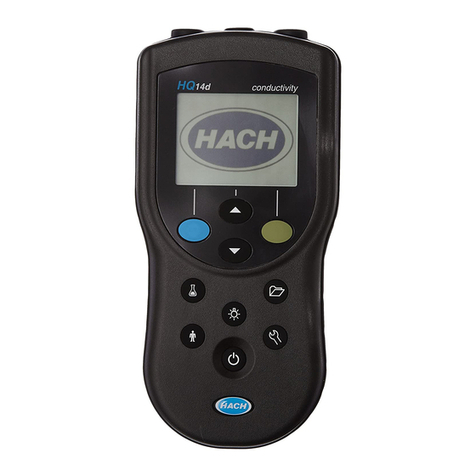
Hach
Hach HQ11d Basic user manual

Elementar Analysensysteme GmbH
Elementar Analysensysteme GmbH vario EL cube operating instructions
